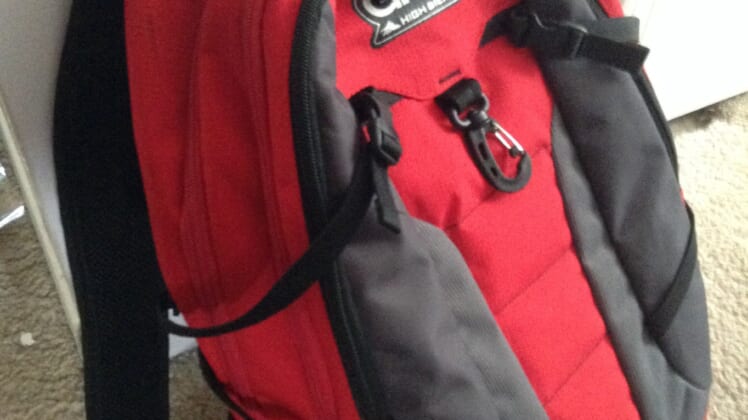
Lynn White, an assistant professor of research at Northeast Ohio University’s College of Medicine, recently got a surprise when she tried to pick up her son’s middle-school backpack. The pack didn’t look unusually full, but it weighed somewhere in between a bowling-ball bag and a sack of bricks. “I thought ‘Oh my gosh, I can’t even put this on the table,'” she says. This is the premise for our thoughts on choosing a backpack for your child.
Modern backpacks are designed to carry heavy loads, and kids take full advantage. They fill their packs with textbooks, notebooks, science projects (intentional and otherwise), video games, lunch, snacks, water bottles, and just about anything else handy. It’s enough to make parents long for the old days when backpacks were small and books rarely left the classroom. It’s also enough to make parents worry about their children’s backs.
New research on backpacks
In recent years, backpack safety has become a hot issue. Concerned moms and dads have lobbied schools to cut down on homework, and some schools have even started issuing duplicate textbooks — one for home, one for school. But are overstuffed backpacks really a danger? A study suggests some of the fears may be misplaced. Heavy loads of books can be bulky and uncomfortable, but, according to this research, they aren’t likely to strain young backs.
Researchers with the University of Michigan Health System asked 184 grade school and middle school children to describe their use of backpacks and to list any problems with back pain. On a later date, the researchers weighed the children and their backpacks. More than one-third of the students complained of sore backs, but, on average, their backpacks weren’t any heavier than the packs carried by kids who were free of pain. The researchers concluded that backpacks may be getting a bad rap.
“Possibly, for children who have back pain, wearing a backpack can make the ongoing pain more uncomfortable,” said lead researcher Andrew Haig, MD, in a University of Michigan Health System news release. “But there’s no evidence that backpacks cause anything more than temporary discomfort.”
Haig speculated that the high rates of back pain may have more to do with the weight of the children than the weight of the backpacks. Middle school students were three times more likely than elementary grade schoolers to report back pain, and the older children were also far more likely to be overweight and inactive. “Frankly, I think that might be more of a factor in back pain than the backpacks,” Haig says.
Students or Sherpas?
Nobody is denying that today’s children are forced to carry mind-boggling loads. The University of Michigan researchers found that on average middle-school students were lugging around about 11 percent of their body weight. In her own survey of nearby middle schools and grade schools, Lynn White found that the average bag tipped the scales at almost 14 pounds, or roughly 15 percent of the average student’s weight. Twenty-three percent of the kids carried packs that were at least 20 percent of their own body weight. “That’s like adults carrying around small refrigerators on their backs,” White says.
Lightening the load
There may be no hard proof that heavy backpacks regularly cause back pain, but kids still have reason to complain. White believes parents should work with teachers to lighten their children’s loads, back pain or no. The American Occupational Therapy Association recommends limiting the weight of the backpack to no more than 15 percent of the child’s weight. Children should also always wear both shoulder straps to avoid putting too much weight on one side, causing them to lean, which can lead to pain.
Some teachers can be persuaded to alternate homework subjects — math one night, social studies the next, etc. The most important steps will take place at home, White says. Parents should check their children’s packs regularly to make sure they aren’t filled with extra junk. They should also encourage their kids to think carefully about what they really need to bring home. Too many kids fill up their packs out of habit, she says.
Serious injuries
Parents should also be aware of the other potential hazards of backpacks. In a study published in the journal Pediatrics, researchers identified 247 kids who had serious backpack-related injuries. The litany of injuries included all sorts of sprains, strains, and broken bones. A few kids hurt themselves while wearing their packs, but they were far outnumbered by the kids who tripped over packs that were lying on the ground.
For parents, the message is clear: Pick up those backpacks before someone gets hurt. Just remember to lift with your legs, not your back.
References
The American Occupational Therapy Association. Back pain awareness: One of the many ways that occupational therapists serve students. October 16, 2008.
Interview with Lynn White, MS, assistant professor of research at Northeast Ohio University’s College of Medicine.
Wiersema, B.M. et al. Acute backpack injuries in children. Pediatrics. January 2003. 111(1): 163-166.
Negrini, S. and R. Carabalona. Backpacks on! Schoolchildren’s perceptions of load, associations with back pain and factors determining the load. Spine. January 15, 2002. 27 (2): 187-195.
White, L.J. et al. Weight of backpacks carried by school children: Students or Sherpas? (abstract) Academic Emergency Medicine. May 2000. 7(5): 487.
American Occupational Therapy Association. Backpack strategies for parents and students. Pack it light, wear it right. December 12, 2001
University of Michigan Health System. Press Release. Kids’ backpacks may not cause back pain after all. May 21, 2003.
Last Updated: March 11, 2015
Children’s Health Health Library Copyright ©2015 LimeHealth. All Rights Reserved.
